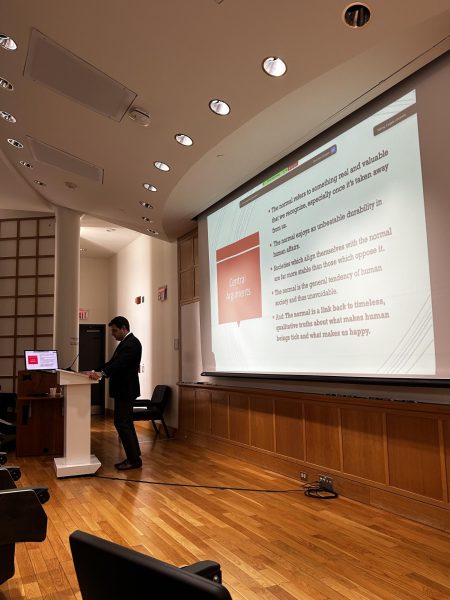A Mysterious Case
As construction workers removed the outer wall of the 1982 Charles A. Dana addition to the Case Library last week, they removed the date stone and found a dented, sealed-off copper time capsule left by the original builders and a program from the building dedication ceremony.
According to tradition, builders leave out a block in the back-up wall of a structure, then fashion a metal box in which they enclose a yearbook, newspaper clippings, audio tapes and lists of financial contributors from the year of the project. The metal box takes the place of the missing block. The outer wall is then built and the date stone is put in place over the time capsule.
While the find was not a surprise, what was not found was.
When workers removed the 1958 date stone from the time that the main library was first built, there was only solid back-up wall where another, older time capsule should have been.
“It’s a damn shame,” Project Manager Vito Bolognone said.
Bolognone is confounded by the earlier capsule’s absence. He recalls that in his 20 years as a draftsman for another architect, there was never a single project for which he did not allow a space for a time capsule behind the date stone.
Bolognone says that there is a vague possibility that the 1958 builders concealed the time capsule behind one of two plaques in the library’s lobby. It is unlikely, however, because vents appear to run directly behind both of them.
Various other objects of interest have been unearthed during the renovation process: a formidable amount of coins from the 1950’s, tools and paintings hidden in the walls, and, on the fourth floor, at least 40 discarded volumes of books.
“What would be really nice to find is a Mason’s mark,” Bolognone said, but that would be found further down in the excavation of the first floor.
Tradition dictates that the 1982 capsule should be opened. Bolognone believes an exception should be made in this case, however.
“It’s unusual that, 23 years later, you tear it down,” he said. “It probably should go back in for another 20, 30 or 40 years.”




